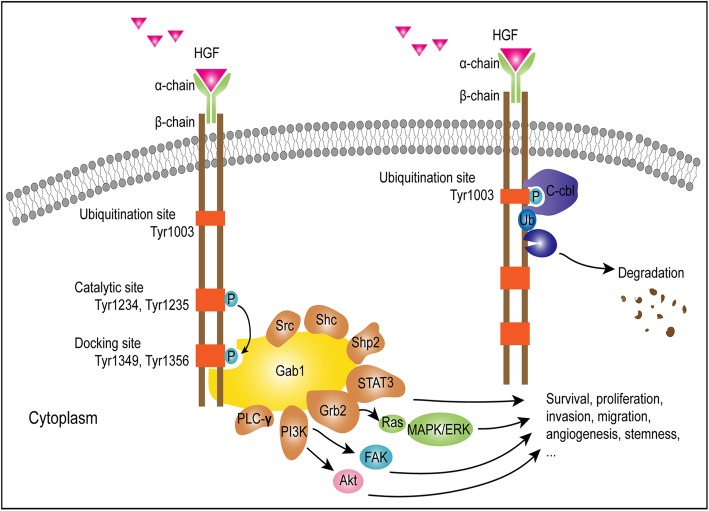Fig. 1.
Activation and phosphorylation sites of MET and downstream effects. The activation of MET results in the autophosphorylation of Tyr1234 and Tyr1235 at the catalytic site, and then leads to the subsequent phosphorylation of tyrosine residues Tyr1349 and Tyr1356 in the docking site. The adapter proteins and substrate kinases are recruited and activated (Gab1: Grb2-associated adaptor protein 1; Grb2: growth factor receptor-bound protein 2; Shp2: Src homology protein tyrosine phosphatase 2; Shc: Src homology domain c-terminal adaptor homolog; PLC-γ: phospholipase c-γ; STAT3: signal transducer and activator of transcription 3; PI3K: phosphatidylinositol 3-kinase; FAK: focal adhesion kinase), which facilitates the progression of gliomas. The phosphorylation of MET at cytoplasmic Tyr1003, induces the phosphorylation of c-Cbl, which has intrinsic E3 ubiquitin-protein ligase activity, leading to the degradation and polyubiquitination of MET

